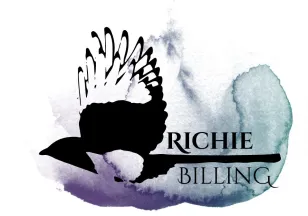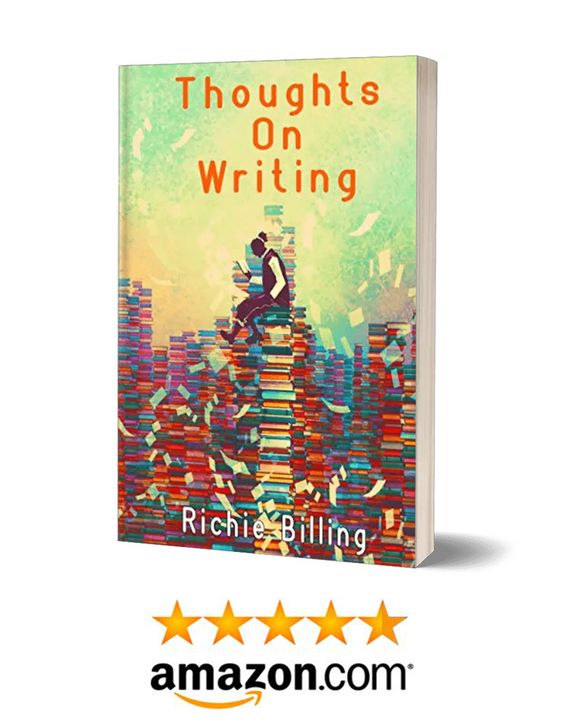The narrative point of view, in a nutshell, is the perspective through which your story is told—the eyes observing what happens.
Most would say there are three types of viewpoint, but to throw a spanner in the works and for the sake of clarity, I’m going to say there are four. You’ve got first person, second person, third person limited, and third person omniscient. Yes the last two are both third person, but they’re markedly different.
Below, we look at the definition of each, discuss the advantages and disadvantages to help you choose which one to use, and the key differences between each one.
Choose A Narrative Point Of View
- First Person
- Second Person
- Third Person Limited
- Third Person Omniscient
- Narrative Point Of View Examples
- Tips On Narrative Point Of View From Professional Book Editors
If you’d rather a visual explainer, check out this awesome video on narrative point of view:
First Person
This is the viewpoint of ‘I’.
“I picked up the sword. I chopped off his toes.”
First person has a present narrator, guiding us through the tale—what they see, think, feel. It’s perhaps the most intimate of all viewpoints, the reader sharing the mind of your point of view (POV) character.
H.P. Lovecraft was a big fan of the first person form, and in my view, was a master of it. The manner in which he tells his tales makes the narrator feel almost invisible. Rarely does he use the word ‘I’. On page one of chapter one of The Call of Cthulhu for example, ‘I’ is used just three times. Prose riddled with a repetitious word of any kind, ‘I’ one example, can disrupt a reader’s flow.
As with all viewpoints, there are pros and cons. Here’s a few pros:
- The intimate nature of this approach makes it easier to build empathy between the reader and your character. This can be particularly helpful if your character is something of an anti-hero.
- For the reasons set out above, it’s immediately immersive for the reader, the story grabbing them by the collar and pulling them into the action.
- If your story focuses on characters, it’s a great way to shine that stage light right on them.
A few cons, to keep things balanced:
- The narration of the tale is limited to that character. So for example, it may be disruptive for the reader to be told the thoughts of one character, when the tale so far has been through the eyes of another. Your POV character ought instead to infer thoughts and feelings from the body language and facial expressions of others. Unless your story is about mind reading, in which case disregard this entire paragraph.
- When writing with ‘I’ it can be easy to slip into your own voice as opposed to the characters’. Stay vigilant!
- It can be tempting to over-indulge in thought or emotional reflection at the expense of moving the story forwards.
- If your POV character isn’t particularly likeable, engaging or charismatic the reader may lose interest.
- As mentioned above, try to avoid peppering a piece with ‘I’s’. If you’ve got a lot of them, you could try re-arranging sentences to remove them or altering words.
Second Person
The second person is the form you’re reading now—the ‘you’s’. The narrator addresses the reader directly, which also gives an intimate feel. It’s quite unusual to see in fiction. It’s a popular form in blogs, for example, because it makes for a more engaging read. I hope.
Literary agent Noah Lukeman in his book on writing The First Five Pages states that “it’s extremely stylistic and nearly impossible to keep up for
more than a page or two.” Sol Stein, master editor, in his book Stein On Writing recommends just shelving this approach altogether (in fiction).

Third Person Limited
Also referred to as third person subjective, this viewpoint tends to be the default for many writers. 1984 by George Orwell, a very relevant book at the moment, way ahead of its time, is an example of a story written in first person. George R.R. Martin uses it in all books of A Song of Ice and Fire, so too does Raymond Feist in The Riftwar Cycle novels, James Barclay in The Chronicles of the Raven series… we could list until nuclear warfare ends the world, which may not be far off, but we’ve all got better things to do.
Third person limited is similar to first person in that the story follows the perspective of one character, allowing the reader to step inside their mind. Prose is written in the form of ‘he’, ‘she’, and ‘they’, with the tense mainly past, though present sometimes too. Here’s a couple of examples:
“James ceased his commentary as something caught his eye. He turned abruptly, reached out, and yanked a small boy away from Borric’s horse. James lifted the boy off the ground and looked him hard in the eyes.”
Prince of Blood, Raymond Feist.
“Jon blew out the taper he carried, preferring not to risk an open flame amidst so much old dry paper. Instead he followed the light, wending his way down the narrows aisles beneath barrel-vaulted ceilings.”
A Clash of Kings, George R.R. Martin.
Here’s a few advantages to using this viewpoint:
- If you enrich your tale with numerous, interesting and unique viewpoints it’ll serve the story well. It gives you a wider scope to world-build, develop conflict and tension. In busy scenes, such as battles, different viewpoints give you the ability to explain how things are developing across the scene, not just in one section, all the while exploring different emotions and reactions.
- Everyone loves a character that grows from a nobody into a hero, and this perspective is a great way to take the reader on that journey.
- It’s the preferred approach by many contemporary writers and publishers.
And the disadvantages:
- As with first person, the narration is limited to your POV character. Behaviour can be observed, but thoughts not known.
- Linked to the above, knowledge is restricted to your POV character. For example, if your fantasy huntress has spent her entire life in the woods, with no knowledge of civilization, the narration would seem a bit odd if cities were described.
Third Person Omniscient
As with third person limited, the story is still about ‘he’, ‘she’ and ‘they’, but the narrator tells the reader the thoughts and emotions of all, or a large number, of characters. It can be quite a demanding approach, but in the right hands works tremendously. Tolkien was a fan. He tended to stick to the POV’s of a handful of characters—Sam, Frodo, Aragorn (to name a few)—though dips into the minds of others too.
I’d say he falls into the realm of the in between. A blend of both. Adrian Tchaikovsky is another (fantastic) writer who I’d say adopts the same approach. A mix of the two is very useful when describing scenes, places or characters, then once description is done, return to your POV characters.
So why do I keep this and third person limited apart? It’s the styles in which they are written. Omniscient follows an all-knowing narrator, whereas limited follows the tale of one or a few characters. If anything, limited lies closer to first person.
The advantages:
- You can describe your world without restraint, because you are god and you know all. It does not matter if your protagonist has never been somewhere, you can describe it down to the last detail.
The disadvantages:
- It can get quite demanding exploring the thoughts of all or a group of characters. Your story may go from a hundred thousand word piece to a series of encyclopedic volumes. To address this, pick just a handful, like Tolkien.
- Stories told in this form are regarded as quite slow.
- According to Penguin Random House, its fallen out of favour with some publishers, mainly because it’s quite an old fashioned style. Tchaikovsky proves otherwise, mind.
- One of the biggest drawbacks is that this viewpoint tends to ‘tell’ the story, instead of ‘show’ it. See my blog post on showing v telling here.
- The narration can have something of a cold and distant feel, with little emotional depth and weak ties to characters.
What Is The Main Difference Between The Limited and Omniscient Third-Person Narrative Point of View?
The primary distinction between limited and omniscient third-person narrative points of view in fiction writing is the extent of access to characters’ thoughts and the breadth of knowledge conveyed to the reader.
In the limited third-person point of view, the narrator conveys the story from the perspective of a single character, often the protagonist, sometimes the villain or antagonist, such as in John Gardner’s Grendel, which I discuss below. The reader is privy to the thoughts, feelings, and perceptions of this central character, experiencing the world through their eyes. However, knowledge is restricted to what this character knows or can observe.
The narrator in an omniscient perspective possesses a godlike omniscience, knowing the thoughts, emotions, and experiences of all the characters in the story. This vantage point allows the narrator to provide insight into the inner lives of multiple characters, delve into their motivations, and offer a comprehensive understanding of the story’s worldbuilding and universe. In essence, readers gain a panoramic view of the narrative.
Narrative Point Of View Examples
It helps to look at some examples of books that adopt different narrative points of view. This is even more important if you’re trying a new viewpoint for the first time. Having that reference point can help no-end.
Here are a smattering of examples:
- First-Person Point of View:
- “The Catcher in the Rye” by J.D. Salinger: The novel is narrated in the first person by its protagonist, Holden Caulfield, offering an intimate look into his thoughts and experiences.
- “To Kill a Mockingbird” by Harper Lee: Scout Finch serves as the first-person narrator, providing a child’s perspective on the events in the book.
- Third-Person Limited Point of View:
- “Harry Potter” series by J.K. Rowling: The series predominantly employs a third-person limited point of view, following the adventures of Harry Potter while providing insights into his thoughts and emotions.
- “The Hunger Games” by Suzanne Collins: Katniss Everdeen is the central character in this dystopian series, and the narrative is limited to her perspective, giving readers access to her inner world.
- Third-Person Omniscient Point of View:
- “War and Peace” by Leo Tolstoy: Tolstoy’s epic novel utilizes a third-person omniscient point of view, allowing readers to delve into the thoughts and emotions of multiple characters across a vast canvas of Russian society.
- “Pride and Prejudice” by Jane Austen: Austen employs a third-person omniscient perspective to offer insights into the thoughts and feelings of various characters, particularly Elizabeth Bennet.
- Second-Person Point of View:
- “Choose Your Own Adventure” series by various authors: These interactive books address the reader directly in the second person, allowing them to make choices that impact the course of the story.
- “If on a winter’s night a traveler” by Italo Calvino: This experimental novel employs the second person to engage the reader directly in a complex narrative structure.
The Narrative Point Of View In Grendel by John Gardner
Published in 1971, John Gardner’s novel “Grendel” is a must-read for those seeking a unique take on the classic Beowulf story. What sets this book apart is its innovative use of narrative point of view, offering readers a fresh and thought-provoking perspective on the age-old tale.
Unlike the traditional third-person narratives often found in epic and heroic sagas, Gardner takes a bold step by letting the monster, Grendel, take center stage as the novel’s first-person narrator.

This narrative choice is a game-changer. It allows readers to get inside Grendel’s head, experiencing his thoughts, feelings, and experiences firsthand. Suddenly, the monster isn’t just a mindless antagonist; he’s a complex character with profound existential struggles, deep loneliness, and a quest for meaning in a world that labels him a villain.
The first-person narrative perspective humanizes Grendel and forces us to question conventional notions of good and evil. We see the world through his eyes and understand his motivations.
Tips On Narrative Point Of View From Professional Book Editors
Lukeman recommends sticking with one viewpoint until reaching a line break. Switching from first to third person within the same passage can be confusing for a reader. He’s very much against switching viewpoint at all, but says that “if you feel compelled to switch, at least do it in a place that will make it less disorientating for the reader.” He asks too why do you feel compelled to switch? Most times it’s down to the POV character lacking something and encourages you to spend more time working on that character.
Related to the above point, Sol Stein says, “The choice of point of view is yours, but once you’ve decided, be sure that you stick to it as if your reader’s experience of the story depended on it. Because it does.”
Which should you use? Stein recommends the one you feel most comfortable with. Try them all, and see for yourself. “… if your work isn’t satisfying you, you can always put the draft aside and re-write it from another point of view. If you’ve used third person, try first.”
For more writing tips and guides, head here.
- 5 Tips to Help Your Child Learn and Succeed at Primary School - February 26, 2024
- The Advantages Of Using An AI Essay Typer Alternative - February 14, 2024
- Advice On Getting Help With Your Homework - January 26, 2024




Pingback: Sharing is Caring Thursdays #1 | Richie Billing
Pingback: 8 Easy Ways To Improve Your Writing Skills - Richie Billing